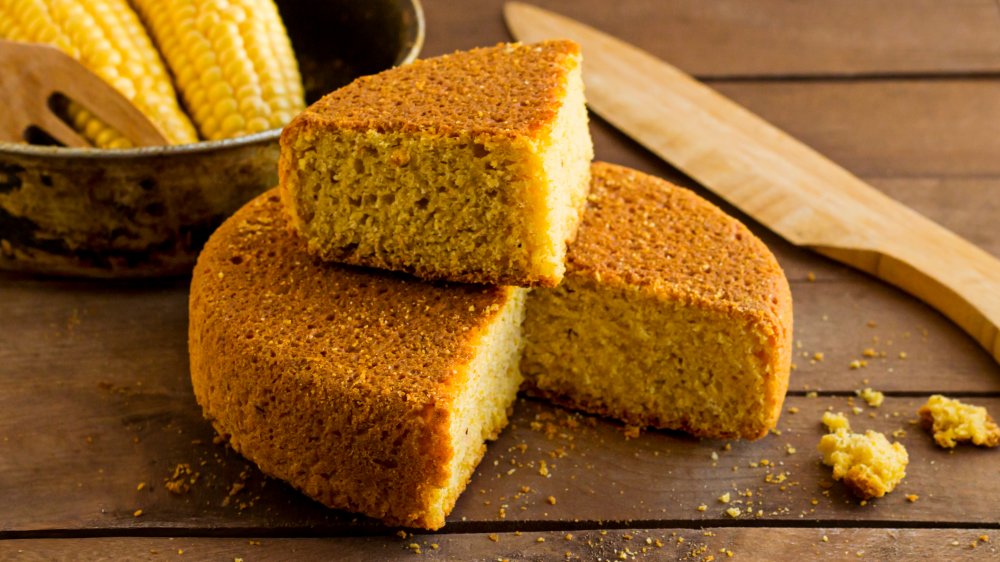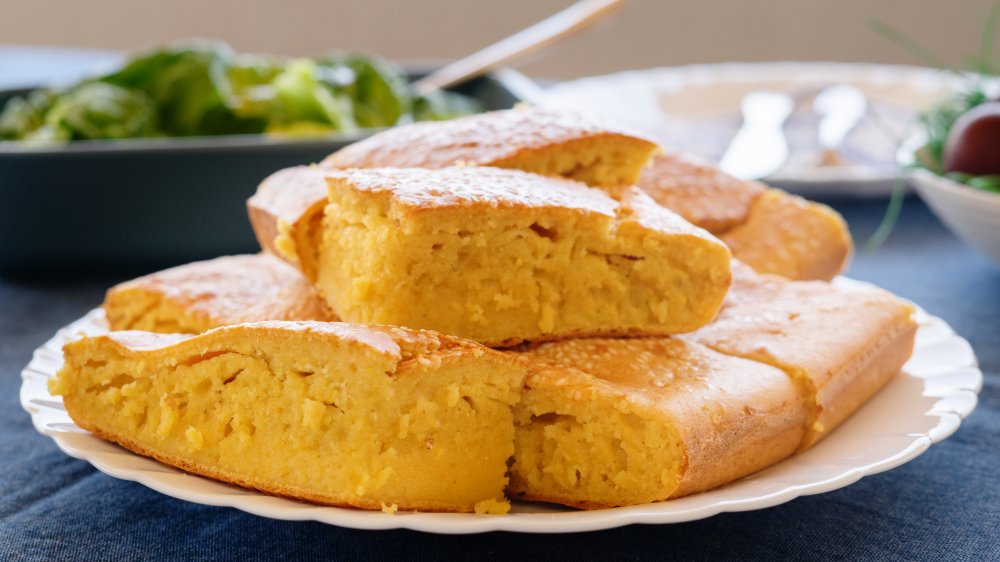The Real Reason Your Cornbread Is Falling Apart
There's a time and place to contemplate how you and everything around you will one day disintegrate like a sandcastle being kicked into oblivion by crotchety old Father Time. But the time for such reflections isn't when you're eating cornbread, and the place certainly isn't in your mouth. When done right, cornbread is downright life-affirming, the best thing since sliced bread. Sliced cornbread is arguably even better. Whether you prefer it as a cakey treat slathered in syrup or the savory Southern version baked with bacon grease, when cornbread is at its best, it's also robust enough to complete the trip from your plate to your face in one piece.
Unfortunately for some of us, what should be a yellow celebration in our mouths becomes a crumby reminder that Father Time waits for no one. Writing for Delishably, Christy Marie Kent recalls, "Until I turned 40, every cornbread I ever made was crumbly." While it's worth pointing out that cornbread is inherently a bit on the crumbly side (like life itself), Kent's cornbread had a pesky habit of "falling apart before you could get it to your mouth." To make matters worse, it had a cotton-like dryness. What did Kent do to turn her crumbly, cottonmouth-inducing cornbread sandcastle into something worth writing home (and an article) about? Part of the answer lies in understanding the interplay of the ingredients.
How to avoid breaking bread the wrong way
The Food Network lists the basic ingredients of cornbread as cornmeal, milk, all-purpose flour, eggs, butter, baking soda, salt, and sugar. Christy Marie Kent says that the relative amounts of cornmeal and flour help determine whether your finished product will stand the test of time – namely, the few seconds it takes for the piece of cornbread to reach your piehole. The gluten in flour adds durability to your cornbread. Meanwhile, cornmeal is slow to absorb liquids, making your cornbread more inclined to crumble, according to Our Everyday Life. So upping the amount of flour may mitigate or eliminate the problem while using too much cornmeal will probably give you that sandy avalanche of broken-breaded disappointment you were hoping to avoid.
Fat also plays a part. However, while Kent recommends decreasing the amount of fat – be it butter, lard, or bacon grease – to tinker with the consistency, Our Everyday Life takes the opposite tack, suggesting that you add fat to soften and moisten the cornbread. Though it's worth noting that Kent also recommends adding an egg to help keep the dish intact, and egg yolks are pretty fatty. A source of protein such as yogurt may lend stability, but eggs are unbeatable in this regard. Whatever you do, don't add sand or bake your cornbread in the shape of a castle. It would be asking for trouble, and there's no time for that.

